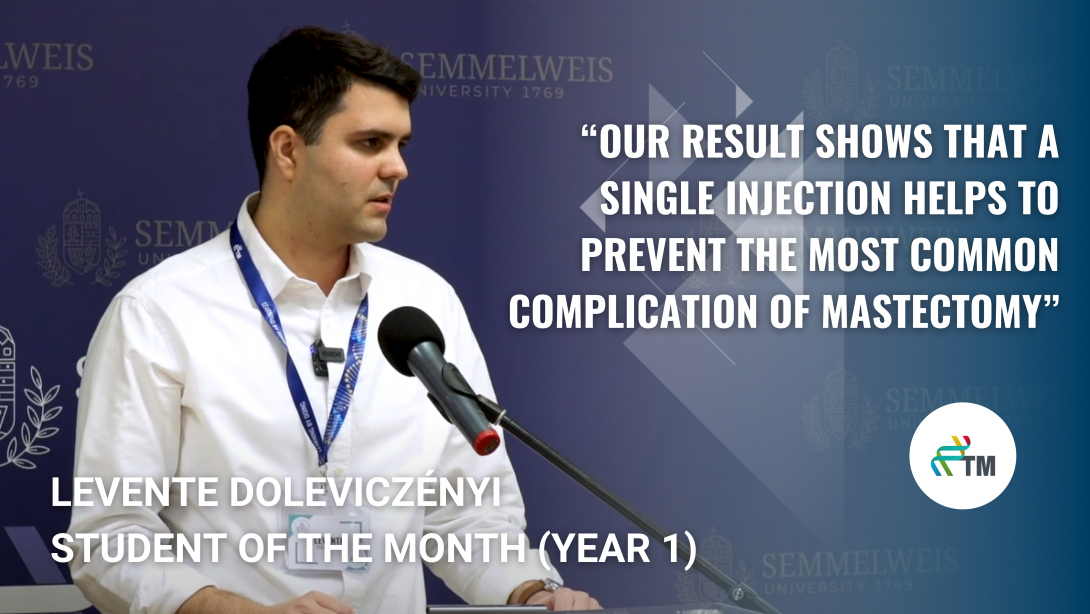
He wants to enhance the prevention of seroma formation after mastectomies, and more generally, to improve the post-operative quality of life in breast cancer patients. His research is progressing exceptionally well; he has already finished his manuscript in the first year of his Ph.D. training. He is the first Ph.D student to have done this. In March, Levente Doleviczényi was named Ph.D. student of the month (Year-1) at the Centre for Translational Medicine.
After graduating from Semmelweis University, Levente Doleviczényi started working as a surgical resident at the Department of Surgery, Transplantation, and Gastroenterology, and shortly afterward, he started doing research. „As a physician, my focus shifted to oncoplastic breast surgery. For this reason, I would like to combine the skills and knowledge of a general and a plastic surgeon and specialize in this complex field. My Ph.D. research is also related to this topic. In my first project, I investigated the efficacy and safety of steroids in the prevention of seroma formation after mastectomies. Our results were significant and robust, showing that a single glucocorticoid injection helps to prevent this complication.”
Seroma is a build-up of fluid, the most common complication after mastectomies. Although it may resolve on its own, usually it requires aspiration. “This means that patients need to attend the outpatient clinic every week or two to receive ambulatory treatment. If an infection develops due to the seroma, antibiotic treatment may also be necessary. If this does not happen, the seroma can still be uncomfortable and lengthen the patient's recovery time, so reducing the risk of it is a major advance in breast surgery. My manuscript on the efficacy of preventive steroid therapy has been completed, and we will soon be able to submit it to a prestigious journal. The plan is to publish it in a D1 paper.” Dr. Doleviczényi has already started his second project, in which he is comparing the efficacy and safety of different techniques in reducing donor site morbidity after latissimus dorsi muscle harvest. This will also be a significant piece of work and could further improve the quality of life of patients who have undergone reconstructive breast surgery.
(Szabó Emese)